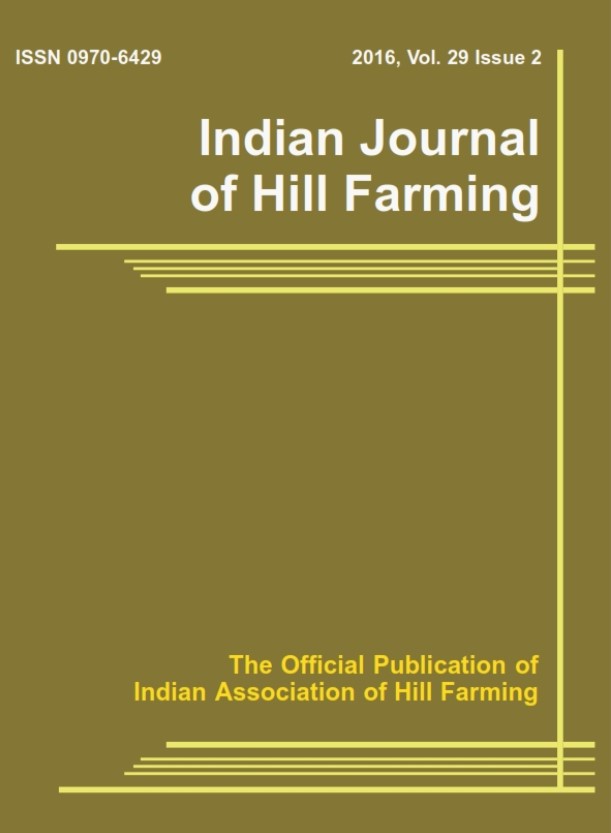Phenotypic characterization and performance evaluation of Balang cattle: Unique cattle germplasm in Arunachal Pradesh of Eastern Himalaya
Abstract
The study was conducted to assess the phenotypic variability, morphometric characteristics and performance traits of Balang cattle in different districts of Arunachal Pradesh. The pre tested questionnaire was completed by 85 tribal farmers from 16 villages to generate information on different management practices and 410 animals of different ages and sexes were measured for physical and morphometric traits. Balang cattle are small to medium sized, having small hump with tuft of hairs both on forehead and in ears. There were white patches on forehead of some animals. The coat color varied which included brown (23.8%), light brown (14.2%) and majority being black (62%). The average body length, heart girth, height at wither, horn length, ear length, face length and tail length, neck length of Balang Bull were 101.06±0.38 cm, 135.29±0.44 cm, 104.01±0.46 cm, 12.11±0.20 cm, 18.90±0.11, 38.34±0.17 and 90.39±0.32 cm respectively. Whereas, the corresponding values for the Balang cattle were 97.67±0.96 cm, 128.64±0.68 cm, 99.73±0.32, 9.96±0.17 cm, 18.46±0.17 cm, 37.99±0.15 cm and 86.69±0.18 cm respectively. The average daily milk yield, peak yield, lactation length were 1.10±0.67 L, 1.31±0.51 L and 170.24± 9.32 days respectively. Milk fat % and SNF % were 4.52± 0.48 and 8.27±0.54 respectively. This unique cattle population is declining due to inbreeding, making it vital to register as a breed and develop genetic improvement programs to increase productivity.




